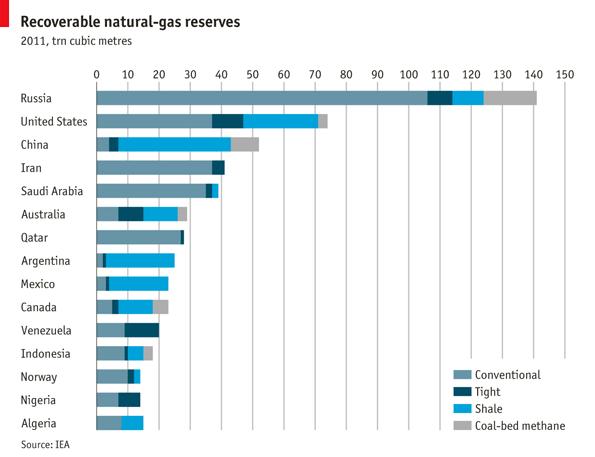Geografia

- China Compra Parte Da Ucrânia?
"While China's population consumes 20% of the world's food supply, its arable land constitutes only 9% of the world's farmland. This disparity, caused by the nation's rapid industrialization and population growth, leads to a higher demand...
- O Centro De Gravidade Económico Do Mundo
Fonte: The Economist "IT IS not exactly news that the world's economic centre of gravity is shifting east. But it is striking how fast this seems to be happening. In a new study on the economic impact of urbanisation the McKinsey Global Institute,...
- Progressos No Acesso A água Potável
MDG drinking water target being met is cause for celebration"More than 3,000 children die daily from diarrhoeal diseases, and 88% of these deaths are due to poor drinking water, lack of sanitation and poor hygiene. So the news from the World Health Organisation...
- The Oil Intensity Of Food
THE OIL INTENSITY OF FOOD http://www.earthpolicy.org/Books/Seg/PB3ch02_ss3.htm Lester R. Brown Today we are an oil-based civilization, one that is totally dependent on a resource whose production will soon be falling. Since 1981, the quantity of oil...
- Earth Policy News
DRILLING FOR OIL IS NOT THE ANSWER Jonathan G. Dorn Background • The United States consumes nearly 21 million barrels of petroleum per day (7.5 billion barrels per year), one fourth the world total. • Of the crude oil consumed in the U.S., 66 percent...
Geografia
Reservas de gás natural

Fonte: The Economist
"Around 45% of the world’s recoverable natural-gas reserves are "unconventional", comprised mainly of shale gas, and also tight gas and coal-bed methane. The International Energy Agency (IEA) reckons global gas demand will increase by more than half between 2010 and 2035, and unconventional gas will make up 32% of the total supply, up from 14% today. While Russia and the Middle East hold the largest reserves of conventional gas, available sources of unconventional gas are spread across the world, and can be found in countries that are currently net importers, such as China and America. But the ease of accessibility will vary from well to well. Extracting shale gas (which is trapped between layers of shale rock) and tight gas (found in sandstone) involves bombarding the rock with water and chemicals, a technique known as "fracking". This is more expensive than the methods used to produce conventional gas. Costs differ between countries, too. China’s shale-gas and coal-bed methane industries are subsidised to the tune of 3 cents per cubic metre. Elsewhere there is less government support. France and Bulgaria have banned fracking for environmental reasons." The Economist
- China Compra Parte Da Ucrânia?
"While China's population consumes 20% of the world's food supply, its arable land constitutes only 9% of the world's farmland. This disparity, caused by the nation's rapid industrialization and population growth, leads to a higher demand...
- O Centro De Gravidade Económico Do Mundo
Fonte: The Economist "IT IS not exactly news that the world's economic centre of gravity is shifting east. But it is striking how fast this seems to be happening. In a new study on the economic impact of urbanisation the McKinsey Global Institute,...
- Progressos No Acesso A água Potável
MDG drinking water target being met is cause for celebration"More than 3,000 children die daily from diarrhoeal diseases, and 88% of these deaths are due to poor drinking water, lack of sanitation and poor hygiene. So the news from the World Health Organisation...
- The Oil Intensity Of Food
THE OIL INTENSITY OF FOOD http://www.earthpolicy.org/Books/Seg/PB3ch02_ss3.htm Lester R. Brown Today we are an oil-based civilization, one that is totally dependent on a resource whose production will soon be falling. Since 1981, the quantity of oil...
- Earth Policy News
DRILLING FOR OIL IS NOT THE ANSWER Jonathan G. Dorn Background • The United States consumes nearly 21 million barrels of petroleum per day (7.5 billion barrels per year), one fourth the world total. • Of the crude oil consumed in the U.S., 66 percent...
